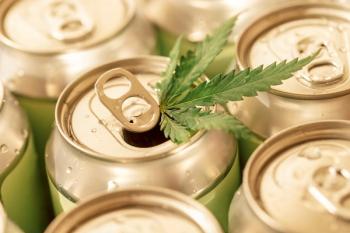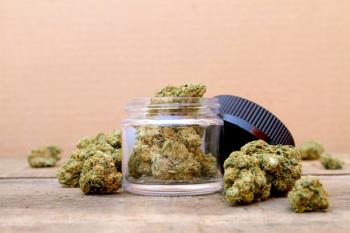
Cannabis Science and Technology
- November/December 2019
- Volume 2
- Issue 6
Application of a Simple Genetic Assay to Discriminate Hemp from Drug-Type Cannabis
A report on the findings from the initial field evaluation of a molecular DNA-based assay to distinguish the categories of fiber hemp, resin hemp, and THC cannabis based on genetics.
The explosion in the hemp industry within the United States has created confusion for state regulators and hemp farmers. The passage of the 2018 Farm Bill provides for the widespread planting of hemp containing less than 0.3% tetrahydrocannabinol (THC). While some hemp is being grown for fiber and seed, most of the 2019 hemp harvest is intended for extraction of cannabidiol (CBD). Therein lies the anxiety, since resinous hemp is often above that 0.3% THC threshold. An alternative to relying on THC content alone is to distinguish the categories of fiber hemp, resin hemp, and THC cannabis based on genetics. Here we report on the findings from the initial field evaluation of one such molecular DNA-based assay. The assay ID markers correctly identified 420 out of 420 individual seed, leaf, and flower cannabis samples. Correlation with a subset of available cannabinoid data shows that while low in THC content, 72% of these resin hemp samples fall outside of the 2018 Farm Bill’s definition of hemp of less than 0.3% THC.
The Agriculture Improvement Act of 2018, otherwise known as the 2018 Farm Bill, was signed into law on December 20, 2018. The 2018 Farm Bill legalized the cultivation and sale of hemp at the federal level effective January 1, 2019 (1). The change in federal status had broad ramifications for the hemp and cannabidiol (CBD) industries in the United States. Until December 20, 2018, hemp was categorized as a Schedule I substance under the Controlled Substances Act. It was illegal at the federal level to cultivate, possess, or distribute the hemp plant or CBD derived from the hemp plant. Almost all CBD products were illegal at the federal level. Notwithstanding, the CBD industry has flourished across the United States operating in the gray zone created under the federal policy in state jurisdictions where cannabis business is legal and regulated to some degree.
Concomitant acreage of hemp has quickly grown to more than 500,000 acres in the U.S. alone with much more under licensure. There have been many challenges associated with this ramp up in hemp cultivation starting with the definition of hemp as Cannabis sativa L. with a Δ9-tetrahydrocannabinol (Δ9-THC) concentration of not more than 0.3%. Some might strictly interpret that 0.3% to mean the Δ9-THC content only, others might take additional steps to account for tetrahydrocannabinolic acid (THCA) content. This is hardly the only point of confusion. Is moisture content taken into account? What is the analytical method? How are extracts and infused products regulated? Who performs this analysis? Each of these questions add layers of confusion and slow the growth of the industry.
Let’s consider the specification of Δ9-THC, for example. Most of the THC in the plant is not Δ9-THC but THCA. Therefore, if only Δ9-THC is considered, 17% of THC cannabis from the tightly regulated medical and adult-use cannabis industry in Nevada could also be categorized as hemp no matter how much THCA is present. If THCA is accounted for, a significant percentage of the resin hemp being grown under the current hemp industry expansion may be in a gray zone, since the high end of total THC content variation in these plants seems to be around 1% or higher.
The 0.3% THC distinction is artificial and creates confusion, but there actually are three distinct phenotypes of Cannabis sativa L. (see Figure 1) with an unmet need for easy discrimination. The molecular assay described in this article was developed as a DNA-based alternative to differentiate fiber hemp, resin hemp, and THC cannabis. This simple evidence based genetic test provides a clear picture of what hemp farmers are growing and thereby provides an alternative to the 0.3% THC cutoff as proposed in the 2018 Farm Bill.
The assay uses two single nucleotide polymorphisms (SNPs) that were previously identified by Henry in 2018 (2). Based on data from 192 cannabis DNA samples, we proposed the use of a set of two SNPs found in two disparate regions of the cannabis genome; the mitochondria and the THCA synthase gene (Table I). These two molecular markers provide a rapid and cost-effective means to differentiate fiber hemp, resin hemp, and THC cannabis.
Materials and Methods
Cannabis sativa L. Plant Samples
Hemp samples including seed, leaf, and flower were collected in Vermont, North Carolina, Colorado, and Nevada for DNA extraction and testing on the Tru-Hemp ID assay (GroSciences). Additional analysis on Tru-Hemp ID markers was performed on samples accessed from retention held at Digipath Labs in Las Vegas, Nevada under a state approved method development R&D project. Additional analysis on Tru-Hemp ID markers was also performed at VSSL in Kelowna, British Columbia. The Tru-Hemp ID data output is available in real time, and the Solas 8 instrument (MatMaCorp) can be linked to a remote computer, or cellphone. Eight samples can be tested in parallel, and the reaction takes approximately 2 h. The associated DNA prep method adds about 1 h. Representative graphic displays of the amplification of the two observed outcomes for each of the two SNPs is shown in Figure 3.
Chemotyping of Large-Scale Population Samples
Cannabinoid and terpenoid analyses followed the approach described by Orser and colleagues (3,4) and was extended to a total of 8859 individual cured cannabis flower samples. Briefly, cannabinoid certified reference standards for THCA, cannabidiolic acid (CBDA), Δ9-THC, CBD, tetrahydrocannabinolic acid (THCV), cannabidivarin (CBDV), cannabigerol (CBG), cannabigerolic acid (CBGA), cannabichromene (CBC), Δ8-THC, and cannabinol (CBN) were obtained from Cayman Chemical as 1.0 mg/mL solutions in methanol. Cannabinoid analysis was undertaken using high performance liquid chromatography with diode array detection (HPLC-DAD) using an Agilent Technologies 1260 UPLC system equipped with a G4212A DAD, G1316C temperature-controlled column compartment, G4226A autosampler, and G4204A quaternary pump. All cannabinoid data is reported on an as is basis per Nevada regulations.
DNA Isolation and SNP Detection
DNA isolation of field samples was completed using the MagicTip Plant DNA Isolation kit (MatMaCorp) as per manufacturer instructions. Briefly, a lysis buffer is applied to about 5 mg of sample which is crushed in the buffer using a supplied silica-based substrate (MagicTip). Following a heating step, a binding buffer is added, thus allowing DNA from solution to bind to the MagicTip. Removal of the MagicTip into a new tube containing an elution buffer leaves the sample debris behind and facilitates elution of the bound DNA. Per manufacturer instructions, 1 µL of isolated DNA was used as template for genetic analysis in a Combined Sequence Amplification and Detection (C-SAND) assay (MatMaCorp). The C-SAND assay is a customized detection assay that is conducted using a four-channel fluorescence detection platform, the Solas 8 (MatMaCorp). The C-SAND assay was designed to detect two SNPs, one mitochondrial and one genomic in cannabis sativa. Briefly, the assay is a two-step padlock probe-based method that begins with hybridizing the custom-designed probes with their desired nucleic acid target found in the sample. Once hybridized, the probes are then ligated to form a circle and are subsequently amplified. Detection takes place during the amplification step using fluorescently labeled primers that hybridize with the previously formed circles. Each target has been assigned a channel on the Solas 8 and is detected independently.
Calling Algorithm
The calling algorithm uses first-order kinetics reaction properties (inflexion point detection) in combination with a measure of the closeness of the two signals associated with a specific SNP. Various indicators are tracked during the reactions to perform on-the-fly analysis. The analysis is then consolidated by a measure of the similarity between the two fluorescence signals at the end of the run. Aggregating values from the similarity measure, the end gain, and the inflexion point detection allow the Solas 8 to make the call at the end of the run without having to compare a results library of known sample genotypes.
Results
To illustrate the confusion created by defining hemp based on Δ9-THC content under 0.3%, we applied that guidance to the cannabinoid analytical data for a set of 8859 individual THC cannabis flower samples. Approximately 17% of these THC cannabis plants could be categorized as hemp and therefore would be legal under the 2018 Farm Bill even though they contain up to 31% THCA (Figure 2). The red line in Figure 2 represent the 0.3% Δ9-THC content cut off, and samples below that line could potentially be considered hemp even though they are high in THCA. This is clearly not the intention of the rule.
The intention of the rule is to distinguish THC cannabis from hemp. We tested 420 samples on the Tru-Hemp ID markers to attempt to define the relevant categories genetically. The observations for all 420 individual samples analyzed by Tru-Hemp ID were found to be accurate based on phenotype (Table II) and the chemical analyses when those data were available (Table III).
While only 10 fiber hemp samples were available for testing, they all resulted in the expected Mito marker A/A and the SW6 THCA synthase marker A/A. As well, results for 100 resin hemp samples all reported the Mito marker as C/C (differentiating them from fiber hemp) and the SW6 as A/A in common with the industrial hemp, as expected. The most abundant category was THC cannabis and these samples showed the Mito marker as C/C (in common with resin hemp) and either heterozygous A/G or homozygous G/G at SW6.
In Table III, the available correlative analytical cannabinoid data is reported by category for the samples evaluated. THCA and CBDA are accounted for in this data, in line with the majority of current regulatory strategies. Notably, 72% of resin hemp samples, 35 out of 48 samples tested, had a THC content greater than or equal to 0.3%. In Figure 4, a logit graphical representation of the distribution of THC content observed across all samples tested to date with the Tru-Hemp ID clearly demonstrates the separation of hemp samples shown in green dots with the drug-type THC cannabis shown in red dots where a cut-off representing 0.3% THC would eliminate 72% of the hemp samples. Note: The logit is the log of the odds ratio = log[percent/(1-percent)] used to transform percentage and proportion data. The logit for 0.3 % (decimal 0.003) is equal to the log base 10 of (0.003/(1-0.003)) = -2.52157. Moving the THC cutoff to 1% THC would be inclusive of all but one outlier.
Discussion
The current legal distinction for hemp is not evidence-based and introduces confusion that impacts the pace of economic development. The arbitrary 0.3% Δ9-THC comes from a 1976 study describing cannabis taxonomy and was not intended as a legal distinction (5). Legal confusion leads to economic consequences for hemp businesses. This confusing guidance criterion has become a burden on law enforcement where testing procedures vary widely from state to state and CBD seed stocks are often not stable enough to guarantee a consistent phenotype.
Hemp industry regulators, farmers, processors, distributors, and retailers all require an evidence-based compliance framework. Results from Tru-Hemp ID markers demonstrate that evidence-based compliance strategies are available now. More comprehensive genetic identification and distinction strategies will undoubtedly make their way into the cannabis industry, and this simple example represents just one of many ways these technologies will be useful for both farmers and regulators.
In addition, improved learning algorithms for near infrared (NIR) screening technology for cannabinoid content is coming online that complements the use of a genetic screening in the field or laboratory (6). Economic growth will be best supported when all parties can come together to form a regulatory strategy that coordinates the intentions of law makers with evidence-based realities. Considering their similarity and the overlap of related regulatory issues, regulation of the legal cannabis industry (THC cannabis) along with the hemp industry should be considered in a single comprehensive framework.
Acknowledgements
The authors acknowledge the participation of those hemp farmers from North Carolina, Vermont, and Nevada that participated in this beta-testing of Tru-Hemp ID. Britni Gonzales, Kevin Hong, Alexis Middleton, Benoit Sommervogel, and Stephen Webb assisted with technical aspects of DNA preparation and the Tru-Hemp ID assay.
References:
- Text - H.R.2 - 115th Congress (2017-2018): Agriculture Improvement Act of 2018, Congress.gov (2018),
https://www.congress.gov/bill/115th-congress/house-bill/2/text (last visited Dec 26, 2018). - P. Henry, The Journal of Brief Ideas
https://beta.briefideas.org/ideas/199d82d72bf64234b8ace849cc20896c (2018). - C.S. Orser, Cannabis Science and Technology1(1), 22 (2018).
- C.S. Orser, S. Johnson, M. Speck, A. Hilyard, and I. Afia, Natl. Prod. Chem. Res.5(8),. DOI: 10:4172/2329-6836. 1000304 (2017).
- E. Small and A. Cronquist, TAXON25(4), 405–435 (1976).
https://www.psnet.biz/forum/cbd-news/eurofins-to-provide-rapid-onsite-lab-testing-for-hemp-and-cbd-sales-transactions-at-iham-2019 .
About the Authors
A. Hilyard, S. Johnson, and C. Orser are with Digipath Inc., in Las Vegas, Nevada. S. Lewin is with MatMaCorp Inc., in Lincoln, Nebraska. P. Henry is with VSSL, in Kelowna, British Columbia, Canada. Direct correspondence to:
How to Cite this Article
A. Hilyard, S. Lewin, S. Johnson, P. Henry, and C. Orser, Cannabis Science and Technology2(6), 42-46 (2019).
Articles in this issue
about 6 years ago
GC-TOF Discovery-Based Profiling of CBD Oil Pet Supplementsabout 6 years ago
Smart HVAC Selection for Successful Cannabis Cultivationabout 6 years ago
Beyond Potency: Fungi, Mold, and Mycotoxinsabout 6 years ago
Spectroscopy Versus Chromatography for Potency Analysisabout 6 years ago
Cannabis and Kids: How Two Moms Use Cannabis to Treat Their ChildrenNewsletter
Unlock the latest breakthroughs in cannabis science—subscribe now to get expert insights, research, and industry updates delivered to your inbox.




